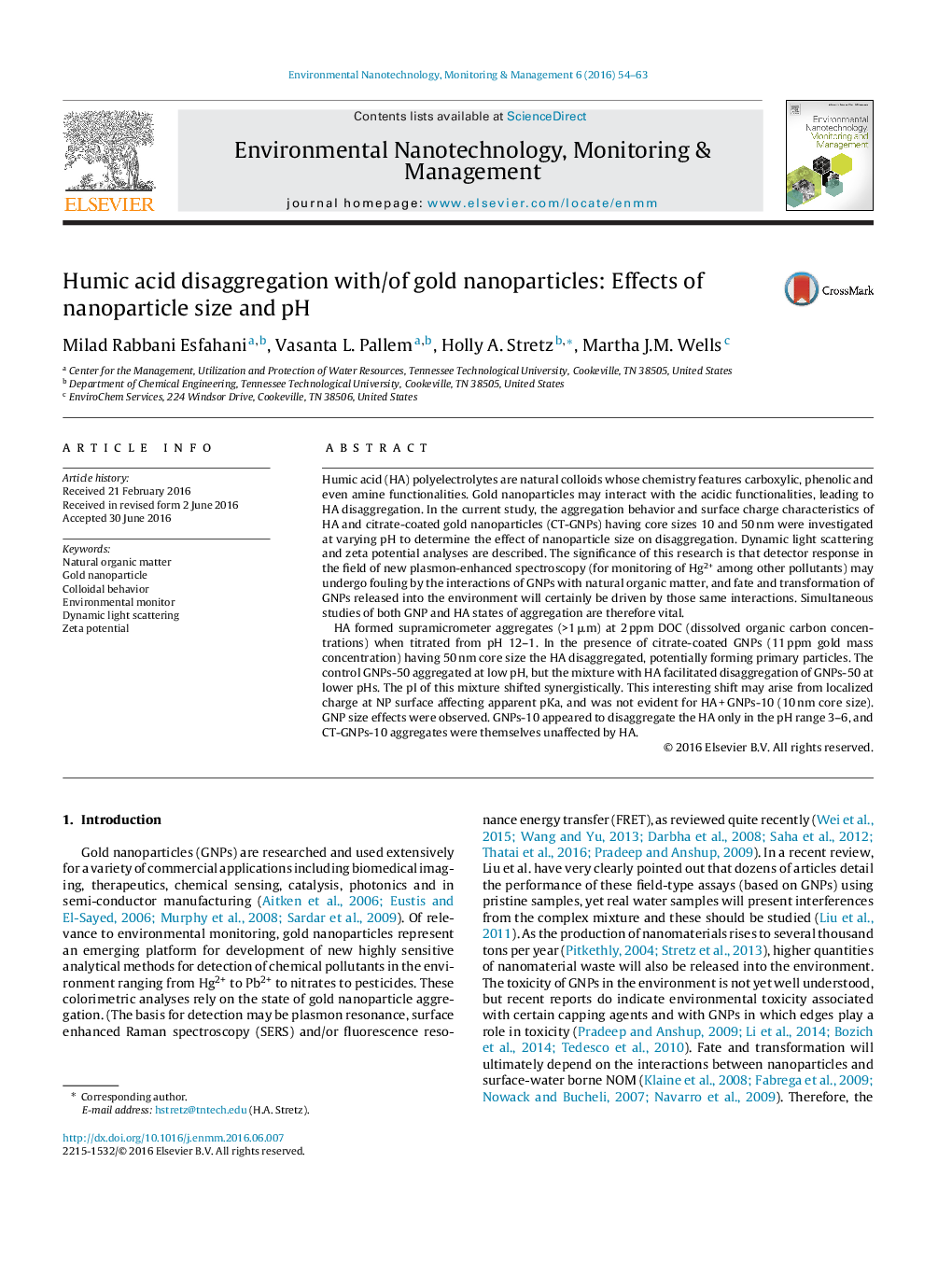| کد مقاله | کد نشریه | سال انتشار | مقاله انگلیسی | نسخه تمام متن |
|---|---|---|---|---|
| 4424185 | 1619101 | 2016 | 10 صفحه PDF | دانلود رایگان |
• Polelectrolyte HA disaggregated by gold nanoparticles.
• Broad pH range of disaggregation.
• Nanoparticle size effect: 50 nm disaggregates HA and 10 nm not as efficient.
• HA disaggregates 50 nm gold but not 10 nm.
• Localized charge distribution caused apparent shift in pI.
Humic acid (HA) polyelectrolytes are natural colloids whose chemistry features carboxylic, phenolic and even amine functionalities. Gold nanoparticles may interact with the acidic functionalities, leading to HA disaggregation. In the current study, the aggregation behavior and surface charge characteristics of HA and citrate-coated gold nanoparticles (CT-GNPs) having core sizes 10 and 50 nm were investigated at varying pH to determine the effect of nanoparticle size on disaggregation. Dynamic light scattering and zeta potential analyses are described. The significance of this research is that detector response in the field of new plasmon-enhanced spectroscopy (for monitoring of Hg2+ among other pollutants) may undergo fouling by the interactions of GNPs with natural organic matter, and fate and transformation of GNPs released into the environment will certainly be driven by those same interactions. Simultaneous studies of both GNP and HA states of aggregation are therefore vital.HA formed supramicrometer aggregates (>1 μm) at 2 ppm DOC (dissolved organic carbon concentrations) when titrated from pH 12–1. In the presence of citrate-coated GNPs (11 ppm gold mass concentration) having 50 nm core size the HA disaggregated, potentially forming primary particles. The control GNPs-50 aggregated at low pH, but the mixture with HA facilitated disaggregation of GNPs-50 at lower pHs. The pI of this mixture shifted synergistically. This interesting shift may arise from localized charge at NP surface affecting apparent pKa, and was not evident for HA + GNPs-10 (10 nm core size). GNP size effects were observed. GNPs-10 appeared to disaggregate the HA only in the pH range 3–6, and CT-GNPs-10 aggregates were themselves unaffected by HA.
Figure optionsDownload as PowerPoint slide
Journal: Environmental Nanotechnology, Monitoring & Management - Volume 6, December 2016, Pages 54–63
